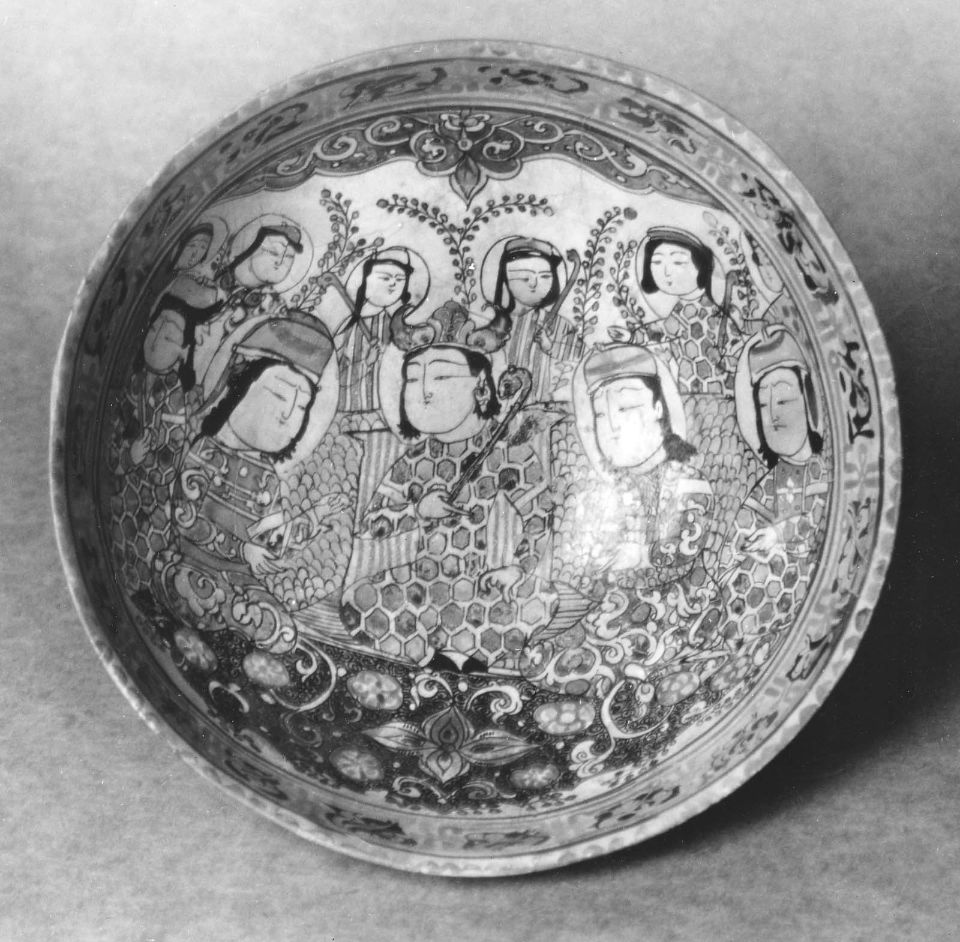
Register a SNAP EBT card with Amazon
King with attendants, late 12th early 13th centuries AD



Persian, Seljuk, late 12th–early 13th century
Iran
Dimensions: Height x diameter: 9.7 x 22.2 cm (3 13/16 x 8 3/4 in.)
Medium or Technique: Composite body (quartz, clay and glass frit), overglaze painted
Classification: Ceramics
Type: Minai ware
Accession Number: 63.1386
Source: Museum of Fine Arts, Boston
The person to the right of the ruler is referenced as Figure 115. Ruler’s attendant, with mail and lamellar armour, Seljuqid Iran, late 12th–early 13th centuries (Museum of Fine Arts, inv. 63.1386, Boston, USA).
"The Iconography of a Military Elite: Military Figures on an Early Thirteenth-Century Candlestick (Part II)" by David Nicolle, in Mamlūk Studies Review Vol. 19, 2016
Referenced as figure 377 in The military technology of classical Islam by D Nicolle
377. Ceramic bowl from Rayy, King with attendants late 12th early 13th centuries AD, Iranian, Museum of Fine Arts no. 63.1386, Boston.
p70 Meanwhile, an asymmetrical mace, probably known as the qurz, and its more sophisticated animal-headed development seem to be restricted to Iran (Figs. 377, 378, 388A, 394 and 399).
p174 Lamellar armour may also have been used in Byzantium in the pre-Islamic era39 (Figs. 90, 91 and 556) but its more widespread adoption after the 7th century clearly reflected Muslim military pressure40 (Figs. 212, 220A, 314, 630 and 637). A smaller but equally common kabadion lamellar cuirass was seen in Byzantium from the 10th century41 (Figs. 227, 242, 249, 314, 414 and 608). This could reflect the changing fashions of eastern Islam, where the lamellar kamaband may have been developed in the 10th century, or it could have been the Byzantine original that stimulated the adoption of this latter Iranian form of armour (Figs. 209, 241, 292, 294, 306, 347, 354, 376, 377, 385, 390, 392, 422, 446, 447 and 641).
39. Haldon, "Some Aspects of Byzantine Military Technology from the 6th to the 10th centuries," p. 20.
40. Ibid., pp. 25-26,29 and 46.
41. Ibid., p 36.